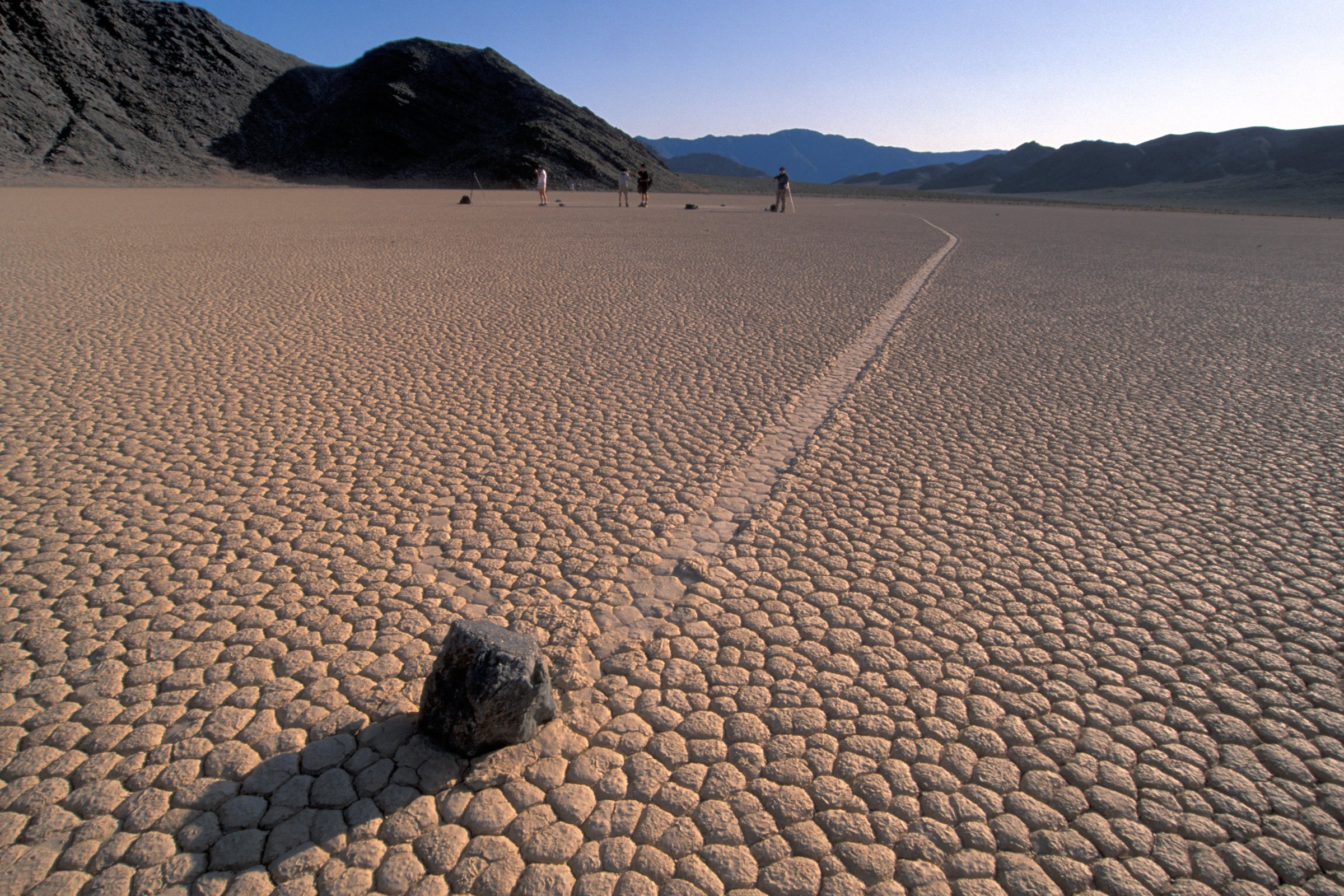
So-called sailing stones in California’s Death Valley National Park have perplexed tourists and scientists alike for their apparent ability to move on their own, leaving sometimes meter-long tracks in their wake.
But after years of speculation, researchers with patience, remote weather monitors, cameras, and stones that are fitted with GPS say they have discovered the force behind the phenomenon.
Wind (very strong winds) and ice (very thick ice) have long been considered as possible explanations for why the rocks, sometimes weighing hundreds of pounds, move. It’s actually a combination of a little of both, the team of researchers say in their study, published in the journal PLOS One this week.
Rainwater in what is known as the Racetrack Playa creates a shallow pond over the playa that, in cold winter temperatures, freezes over. When the ice begins to melt under the sun, it first breaks up into large panels thin enough that, with a nudge from even light winds, they shift — and push whatever rocks may lie in their path.
More Must-Reads from TIME
- How Donald Trump Won
- The Best Inventions of 2024
- Why Sleep Is the Key to Living Longer
- Robert Zemeckis Just Wants to Move You
- How to Break 8 Toxic Communication Habits
- Nicola Coughlan Bet on Herself—And Won
- Why Vinegar Is So Good for You
- Meet TIME's Newest Class of Next Generation Leaders
Write to Noah Rayman at noah.rayman@time.com